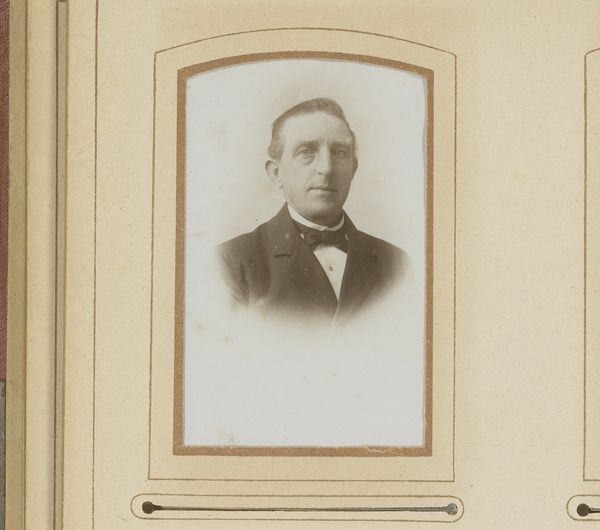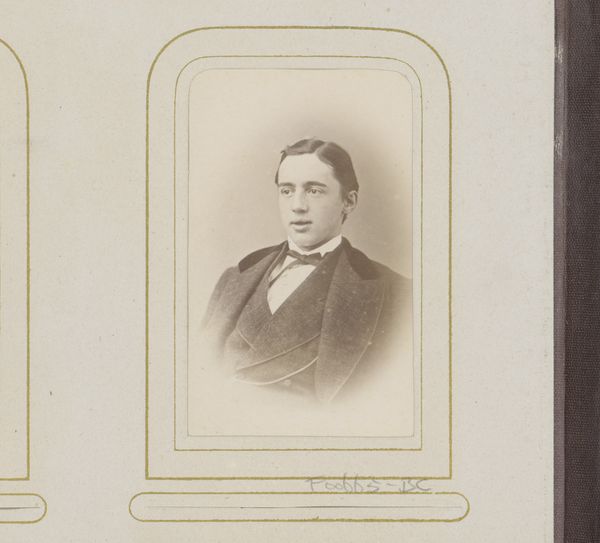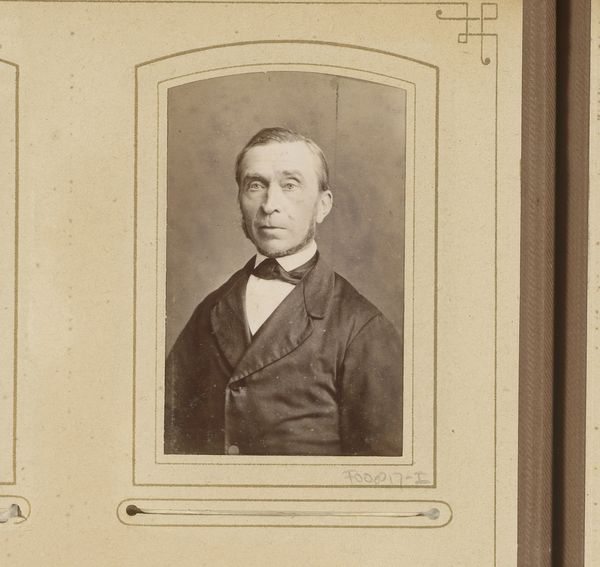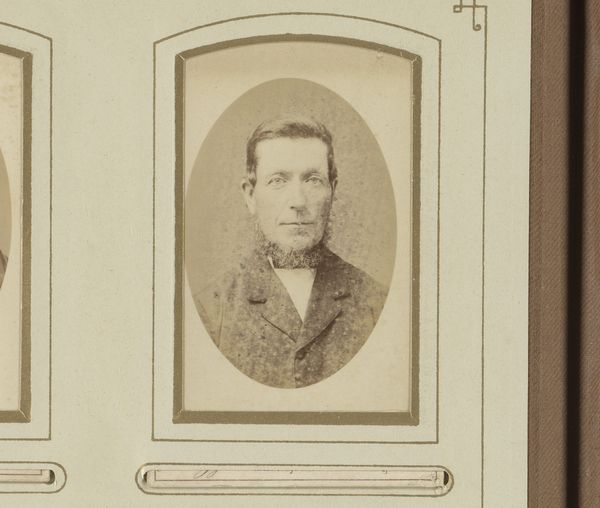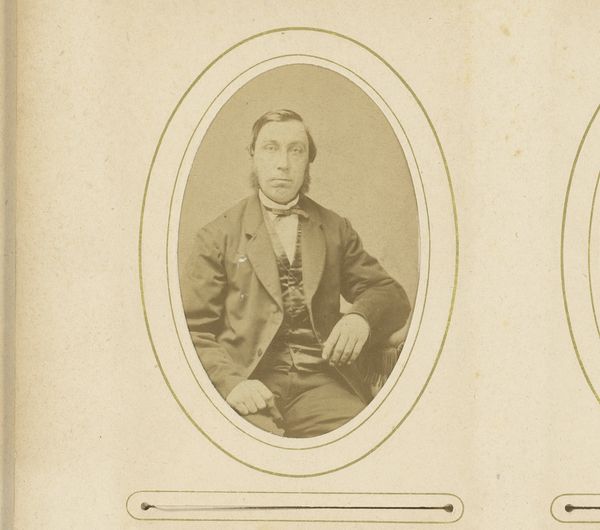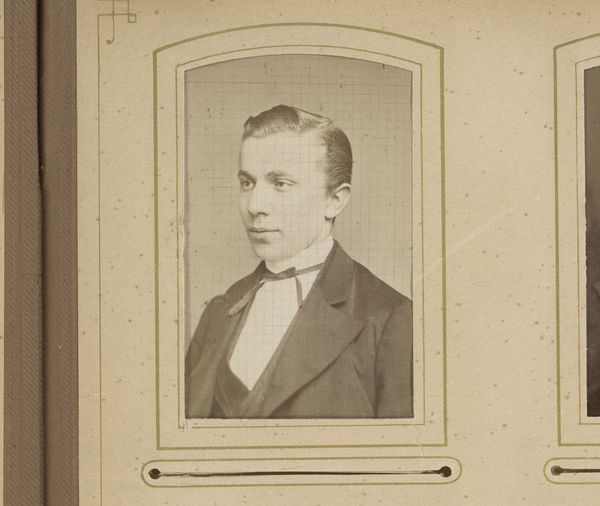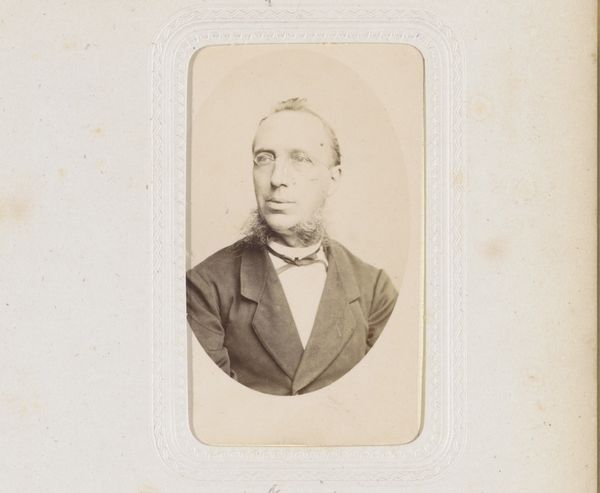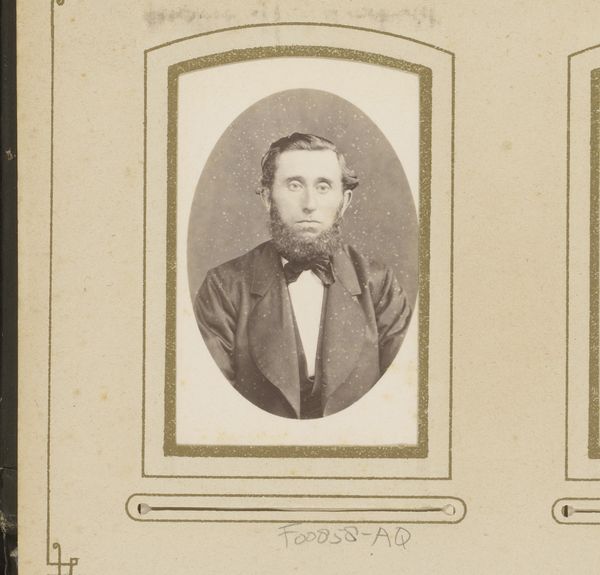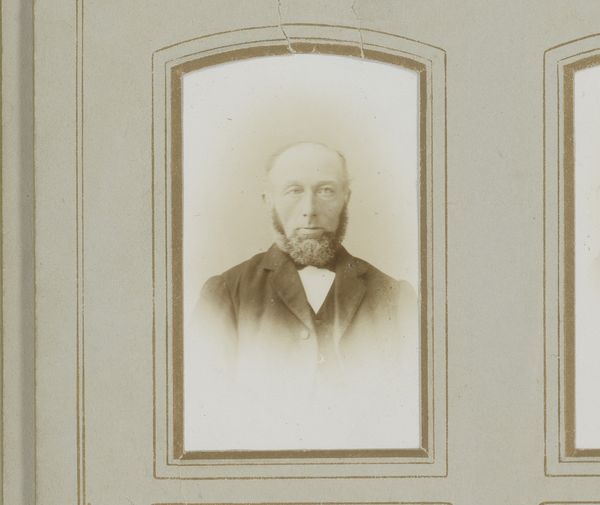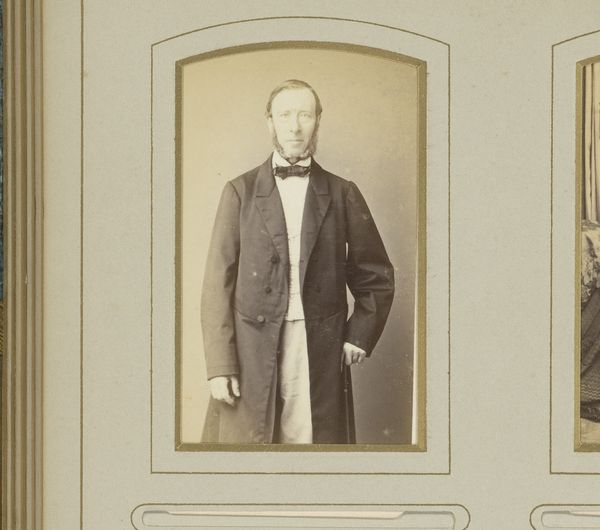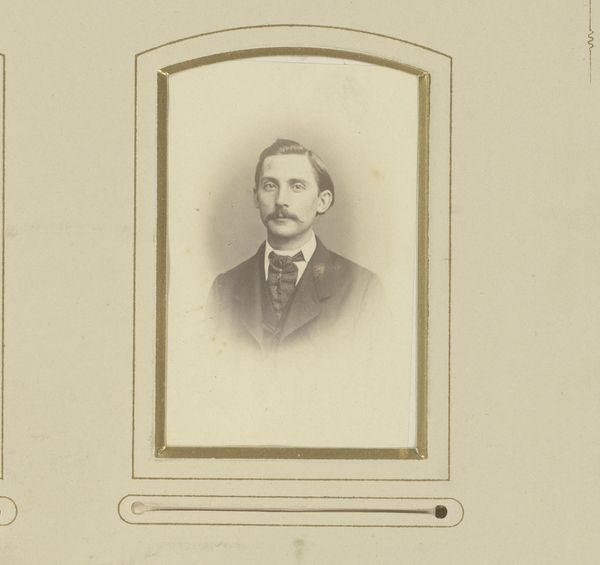
photography
#
beige
#
portrait
#
aged paper
#
toned paper
#
homemade paper
#
photo restoration
#
parchment
#
book
#
photography
#
brown and beige
#
yellow element
#
warm-toned
#
golden font
#
academic-art
#
realism
Dimensions: height 85 mm, width 51 mm
Copyright: Rijks Museum: Open Domain
Editor: Here we have "Portret van een staande man met zijn hand rustend op een boek" (Portrait of a standing man with his hand resting on a book), created sometime between 1864 and 1901 by Louis Désiré Dupont. It's a photograph, and I’m immediately drawn to how it feels both formal and a little faded with age. What catches your eye? Curator: As a materialist, what fascinates me is the photographic process itself during that era. Think about the materials: the specific chemicals, the type of paper used. It tells us a lot about the social context – photography was becoming more accessible, but still a deliberate and somewhat laborious process. Notice the warm-toned, almost aged paper, what does that tell you? Editor: It feels like an object meant to last, something treasured. Does the fact that it's a portrait affect how we interpret the materiality? Curator: Absolutely. Portraiture was a signifier of status and a commodity. Consider the labor involved - not just the photographer's skill, but the manufacturing of the photographic materials, the paper, the chemicals, perhaps even the book itself. It highlights the relationship between artistic production and the larger economic systems at play. Were photos like this widespread? What value did it represent for the family and the sitter? Editor: That makes me think about who would have been able to afford to have their portrait taken then, and what statement they were trying to make. It wasn't a casual snapshot. Curator: Exactly! It was a conscious act of self-representation within a developing industrial and commercial context. Editor: So by looking closely at the materials and the process, we understand much more about society during that period. Curator: Precisely. The art isn't just the image, but the evidence of a specific time, labor, and economy made visible. I feel like I see both labor and bourgeois pretense embodied within the picture. Editor: I never thought of it that way, but it gives me so much to consider when looking at photography from that time. Thank you.
Comments
No comments
Be the first to comment and join the conversation on the ultimate creative platform.
